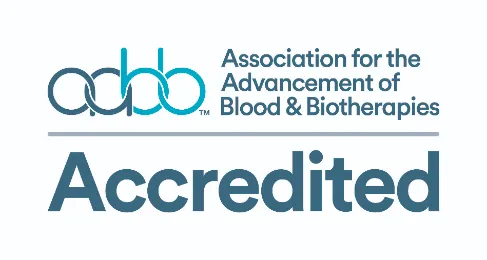FAQ

Contact Us
Stem cells are “master cells” that have the ability to become various kinds of specialized cells in the body to replace cells in organs or tissues that are damaged or going through apoptosis.
The umbilical cord is the conduit between the embryo and the placenta, it’s responsible for the transportation of oxygen and nutrients from the mother to her baby. After baby is born, the umbilical cord is clamped and cut at the part near the baby, the remaining, still attach to placenta, will be discarded as medical waste. Blood still in this part of the umbilical cord and placenta is called umbilical cord blood. The components of cord bloods are the same with normal blood, with red blood cells, white blood cells, platelets and plasma. Moreover, cord blood also has a large amount of stem cells, mostly hematopoietic stem cells, can differentiate into all types of blood cells similar to the ability of bone marrow stem cells. That’s why we can use cord blood stem cells in transplantation instead of bone marrow stem cells.
So far, umbilical cord blood stem cells have been used to treat over 70 different diseases of three main groups. The first one is the majority of blood related cancers such as various kinds of leukemia and lymphoma; the second group is genetic diseases (of red blood cells, the immune system, and metabolic disorders); and the last one is of non-cancer and non-genetic related diseases such as severe anemia, myelosuppression,…
The umbilical cord is surrounded by a layer of membrane, and this cord membrane also has stem cells, generally called umbilical cord lining stem cells. From this source, it is entirely possible to isolate, differentiate and collect two types of stem cells: mesenchymal stem cells and epithelial stem cells.
From mesenchymal stem cells, scientists have differentiated them into fibroblasts (cells below the skin), adipocytes, chondrocytes, osteoblasts, neuron-like cells, and cells producing mucus mucin. Epithelial stem cells, on the other hand, can be differentiated into keratincytes (skin cells), liver cells, and mucus cells produce mucin. Combining both mesenchymal stem cells and epithelial stem cells, scientists can create an equivalent to skin structure, also known as artificial three dimensional skin.
Clinical studies showed that cord lining membrane stem cells are capable of promoting wound healing process of burns and chronic wounds (such as ulcers in diabetic patients, patients after irradication, …). Besides that, cord lining membrane stem cells have also been studied in treatment of hearing and visual disorders through repairing of surface and nerve cells; treatment of bone and cartilage damages; coordinating with gene therapy to treat hemophilia due to deficiency of one of the clotting factors; and treatment of diabetes.
Storing umbilical cord stem cells is a means to ensure the health of your child and your family in the future. No one can foretell the future, so if your baby’s stem cells are kept safely, it will be the most suitable source of cells to use for him/her when needed. If you have family member who needs stem cells treatment, the possibility to find a match between him/her with your baby’s stem cells is still higher than having to look for an unrelated source. Therefore, we can say that storing umbilical cord stem cells is a form of “biological insurance”.
First of all, you should contact MekoStem for instructions and registration procedures (please call at office hours.: In Ho Chi Minh city: (08) 38686546; In Ha Noi: (04) 35143535; In Danang: (0511) 3653179). You should do this as soon as possible when considering storing umbilical cord stem cells, at least 4 weeks before delivery because you have to do some screening tests (totally free of charge) and then complete the registration procedures.
After you complete the registration, sign contract and pay the service fee, you will be provide the hotline numbers of MekoStem’s collection team. As soon as you notice signs of a coming labor, or you have any change in your delivery schedule (such as change of date, time, or hospital), you must contact directly to the provided number so that MekoStem can be at the hospital on time and collect your samples successfully. MekoStem team will be at the delivery room, collect samples, and then bring your smaples back to the laboratory to process.
Yes. For blood diseases such as leukemia, Thalassemia,.. stem cells dose used in treatment is intimately related to the patient’s weight, typically about 20 million cells/kg body weight. Therefore, while techniques for multiplying cord blood stem cells have not yet been used widely, the number of stem cells after processing is very important.
Stem cells, when put into storage at -196 degree C in liquid nitrogen, go into a kind of “hibernation”. At this time, cells are completely inactive, does not function or change their status, so in principle, they last forever or the storing period is permanent. In fact, since stem cells service launched more than 20 years ago, scientists have thawed and evaluated the quantity and quality of stem cells after long term storage. The results showed that cells stored 20 years ago still gave good results in transplantation, still had the ability to grow specific cell colonies as well as could differentiate into desired cell lines.
At MekoStem, till now, we have been signing service contract with customers for 18 years. This does not mean we only store stem cells in 18 years and stop, it just means that after 18 years, the baby is mature enough, with full legal status to decide whether to continue the service and he/she can be the sole owner of new contract, if any.
Stem cells transplantation can be made to the baby itself (autologous transplantation) or can be made to other family members as well as people in the community who have a match in biological index. Siblings have 25% chance of a total match.
The effectiveness of umbilical cord stem cells transplantation depends on many different factors, and one of the most important factors is a compatible in biological index, with the most used is HLA (Human Leukocyte Antigen). HLA markers are unique, and are passed from parents to their chidren, seen as the fingerprint of oneself’s immune system. These markers allow the immune system to regconize and distinguish the body’s cells with exogenous cells.
If HLA markers of the donor and the receiver are identical, or in cases of autologous transplantation, the transplanted stem cells will be easily accepted. In cases that there is only a partial compatibility, methods to support the immune system to reduce GVHD (Graft versus Host Disease) will be applied.
Methods used for stem cells transplantation depend on doctor’s and transplantation specialists’ decisions. Umbilical cord blood and cord lining membrane stem cells can be used directly or be used after culturing to differentiate into the desired cell types (depends on what kind of disease that needs treatment) such as chondrocytes, fibroblasts, myocytes, osteocytes, adipocytes,…
Stem cells can be delivered into patient’s body by blood transfusions, or intravenous injection, or can be injected directly into the damage sites. Similar to other kind of transplantation, stem cells transplantation also require a sterile and strict working conditions, operating room conditions and postoperating conditions.





